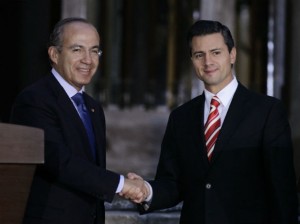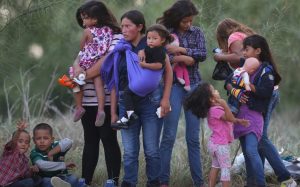By Shannon K. O’Neil
LatIntelligence

As President Calderón’s sexenio wraps up tomorrow, he will leave office with a mixed legacy. Many have presented interesting analyses of his policies, but this post looks at concrete numbers—development indicators and the like—to see how much did (or didn’t) change over the last six years.
Life expectancy rose.
Overall life expectancy in Mexico rose during Calderón’s time in office, from 75.8 years in 2006 to 77 years in 2011. This was accompanied by a decrease in child (under five) mortality, from 19 per 1,000 children in 2007 to 17 per 1,000 in 2009, and maternal mortality (dropping from 54 to 50 per 1,000 from 2005 to 2010). Adolescent fertility also dropped from 74 to 65 per 1,000 from 2005 to 2008. And Mexico’s National Council for the Evaluation of Social Development Policy (CONEVAL) reported that the percentage of Mexicans with access to healthcare rose from 59.2 percent in 2008 to 68.2 percent in 2010.
Education levels increased, albeit slightly.
The expected years of schooling for children rose from 13.2 years in 2006 to 13.9 years by 2011. The average years of schooling for adults also rose from 8 years to 8.5 years in the same time period. The literacy rate improved by 1.7 percent to reach 93.4 percent. Still many rightly question the quality of this greater quantity. Mexico’s Programme for International Student Assessment (PISA) scores (an international test of students academic performance) only moved from an average of 408 (out of 800) in 2006 to 420 in 2009, leaving Mexican students far below the OECD average (of 493) in all three categories—reading, math, and science.
Poverty worsened, inequality was unchanged.
The number of Mexicans living in poverty increased from 44.5 percent in 2008 to 46.2 percent in 2010, an increase of 3.2 million people, according to CONEVAL. The Socio-Economic Database for Latin America and the Caribbean (SEDLAC) reported that extreme poverty—under two and a half dollars a day—also increased, although only slightly. According to OECD numbers, inequality, as measured by the gini index (an indicator that puts 1 as the most unequal and 0 as the most equal), stayed roughly steady.
Nevertheless, common measures of Mexico’s middle class showed improvement. The number of passenger cars per 1000 Mexicans increased from 157 to 191, and the number of cell phone subscriptions grew from 51 to 82 (per 100). More Mexicans logged on to the internet — increasing from 19.5 Mexicans out of every 100 in 2006, to 35.5 of every 100 Mexicans in 2011 (although Mexico still ranks behind peers Brazil and China in its web-connected population).
Infrastructure stagnated.
The percent of roads that were paved rose only slightly from 33 percent to 35 percent, while the number of kilometers of railroad tracks stayed the same (some 26,700). What did change was the usage of these networks. In 2006, 2.6 million (20 foot) container units passed through Mexico’s ports, but by 2011 this number had risen to 3.6 million.
Formal sector jobs increased, but only moderately.
As this graph shows, formal sector jobs steadily rose throughout the sexenio (apart from the steep mid-term recession). However, job creation failed to keep pace with the number of Mexicans entering the job market, meaning unemployment also rose from 3.2 percent in 2006 to 5.3 percent in 2010. CONEVAL reports that underemployment is at 8.3 percent.
Violence escalated.
Murders per capita rose from 9.7 per 100,000 in 2006 to 22.7 per 100,000 in 2010 according to the United Nations Office on Drugs and Crime data. Other crimes (excluding health crimes such as drug consumption or possession) also increased (as reported by Mexico’s Attorney General’s office) from 52 per 100,00 in 2007 to 82 per 100,000 in 2011. There is some evidence that drug-related murders may have plateaued in 2011 and even declined in 2012 (by some 15 to 20 percent the levels of the previous year).
Some of these measures were most influenced by world events and outside shocks, including the 2008 world financial crisis and 2009 swine flu outbreak. But others reflect Calderón’s policy choices, and what he was and wasn’t able to do. They also highlight the challenges for the incoming government, and the need to make progress across issues and indicators.
Shannon O’Neil the Douglas Dillon fellow for Latin America studies at the Council on Foreign Relations (CFR), and the author of a forthcoming book on Mexico and U.S.-Mexico relations. Dr. O’Neil’s expertise includes political and economic reform in Latin America, with a focus on Mexico and Brazil, U.S.-Latin American relations, energy policy, trade, and immigration. Prior to joining CFR, Dr. O’Neil worked in the private sector as an equity analyst at Indosuez Capital Latin America and Credit Lyonnais Securities. She holds a BA from Yale University, an MA in international relations from Yale University, and a PhD in government from Harvard University. Readers can follow her on Twitter at @latintelligence.




